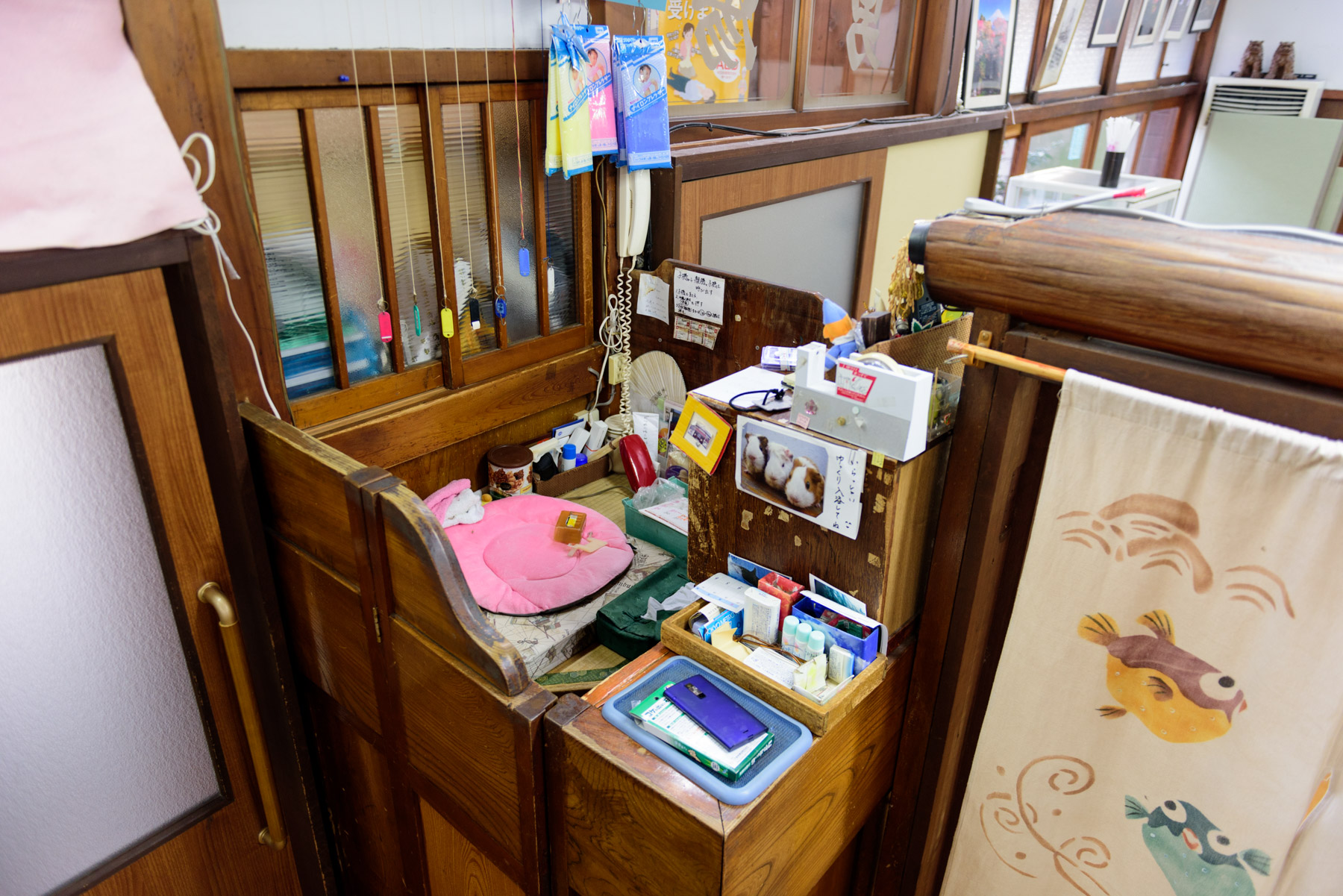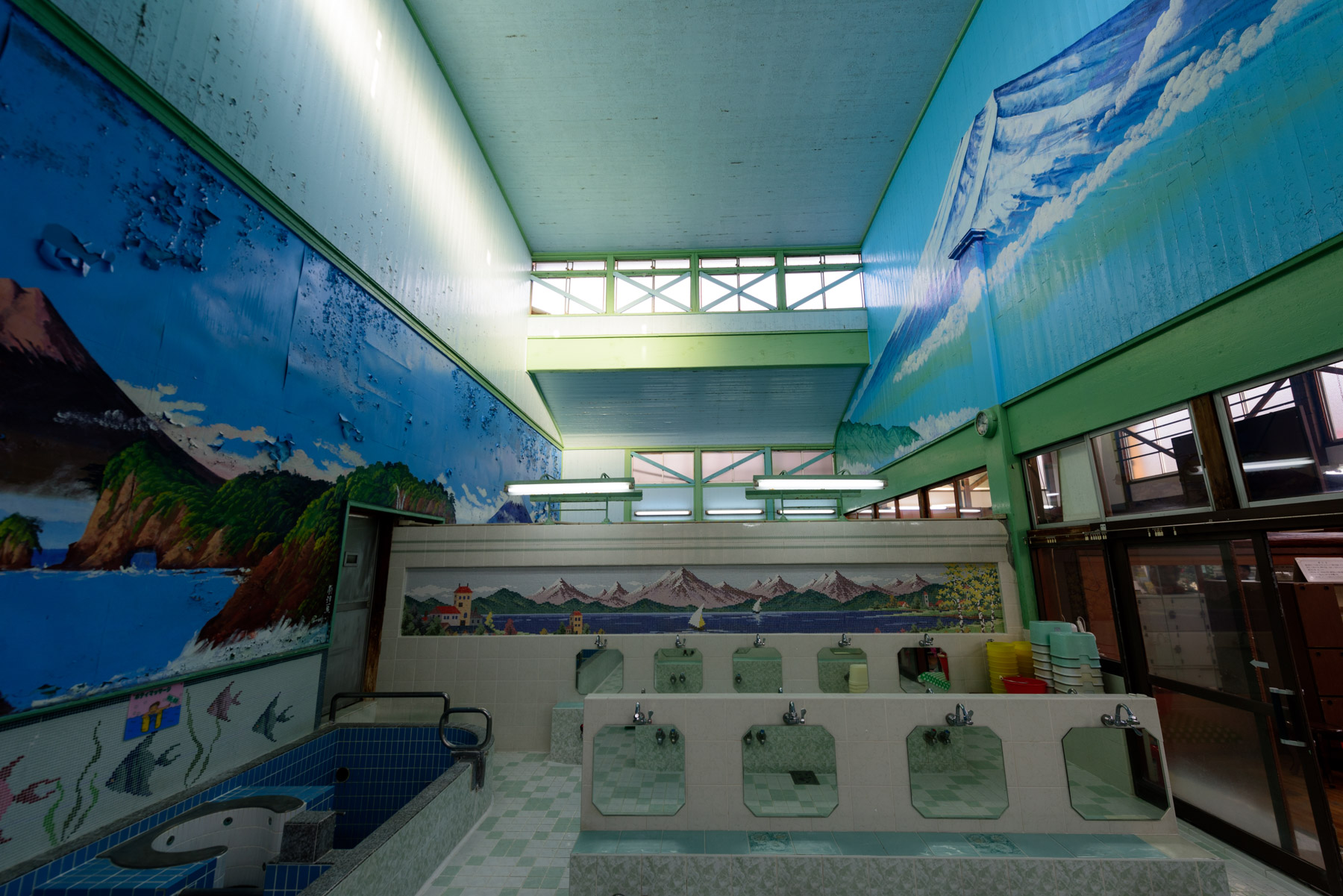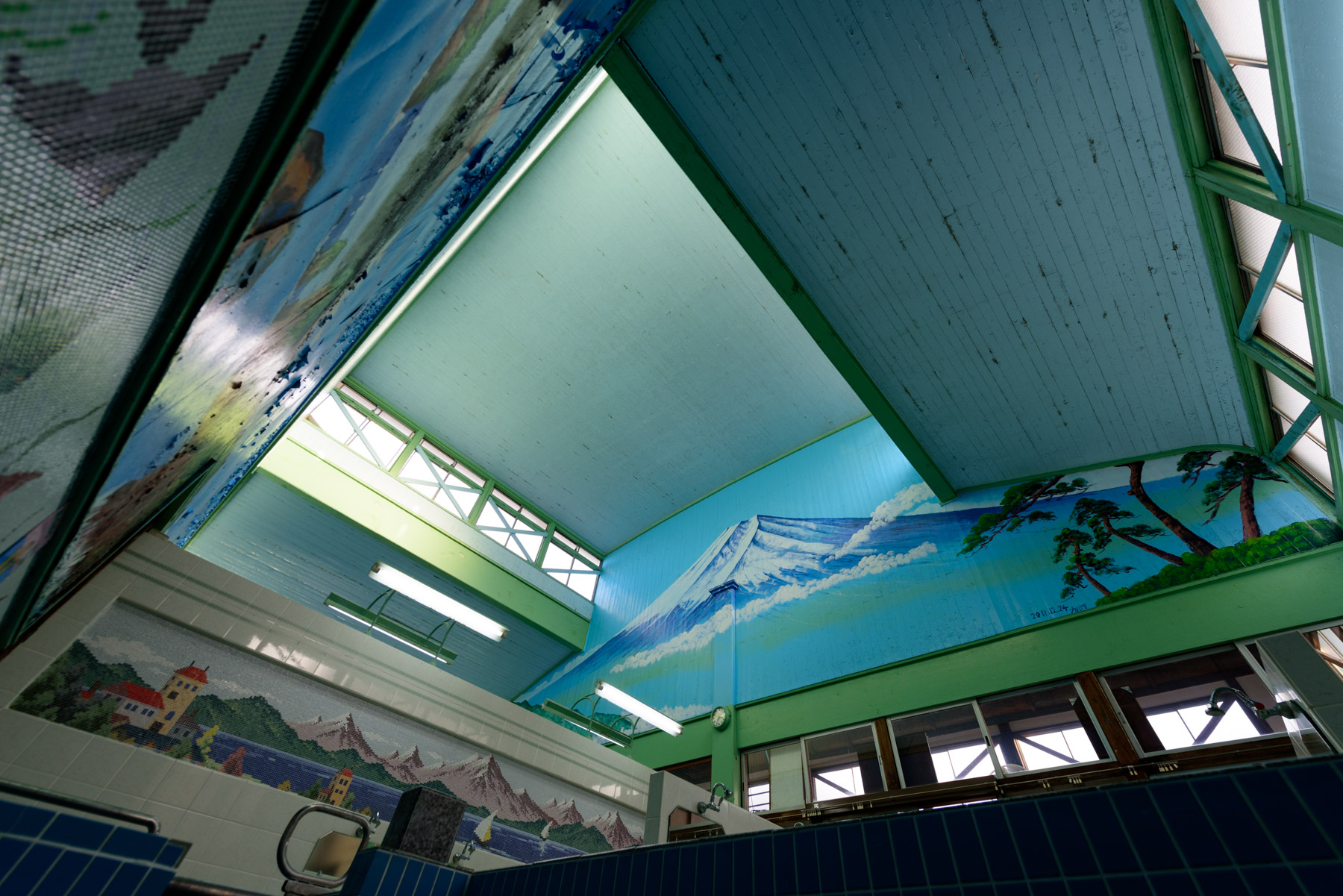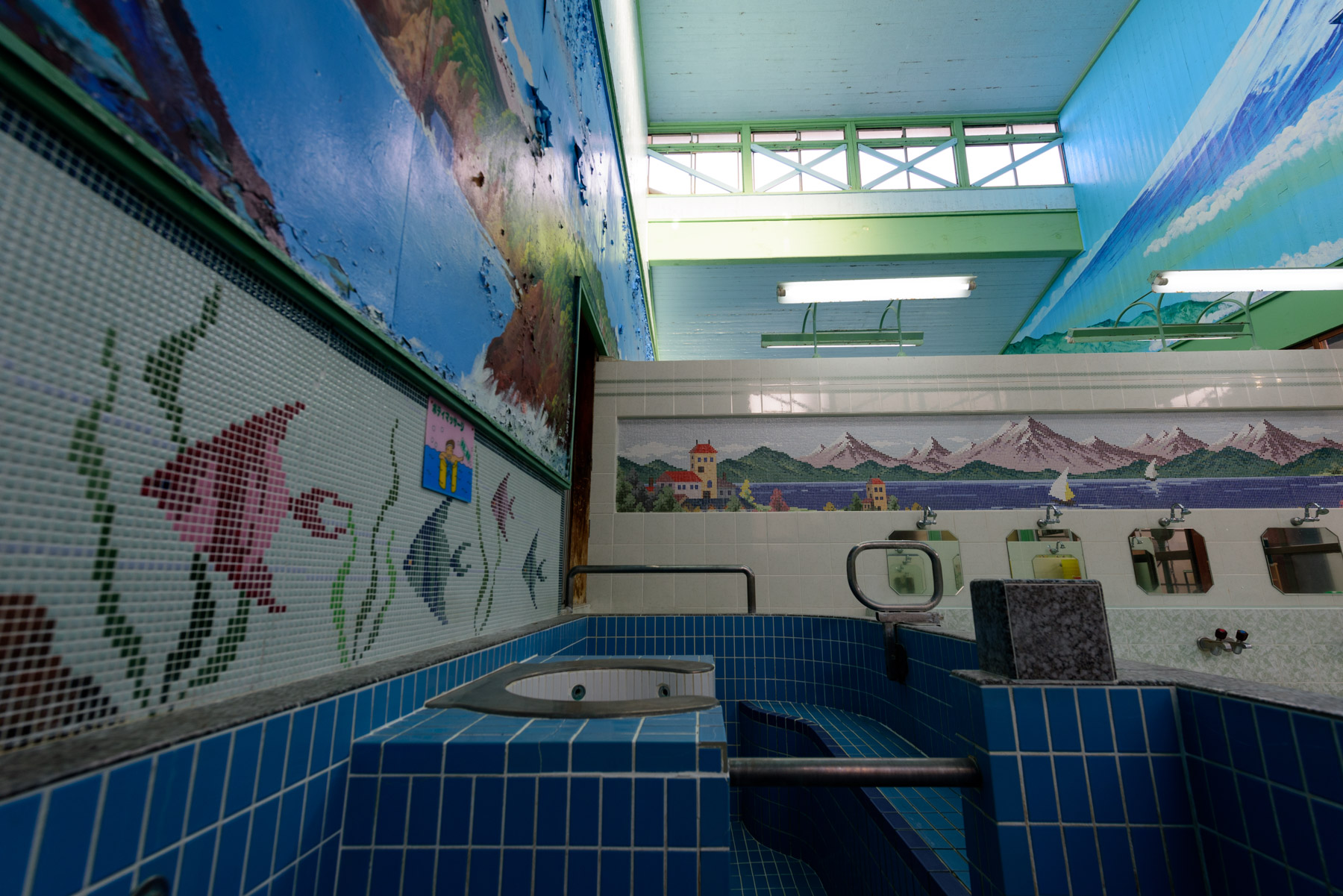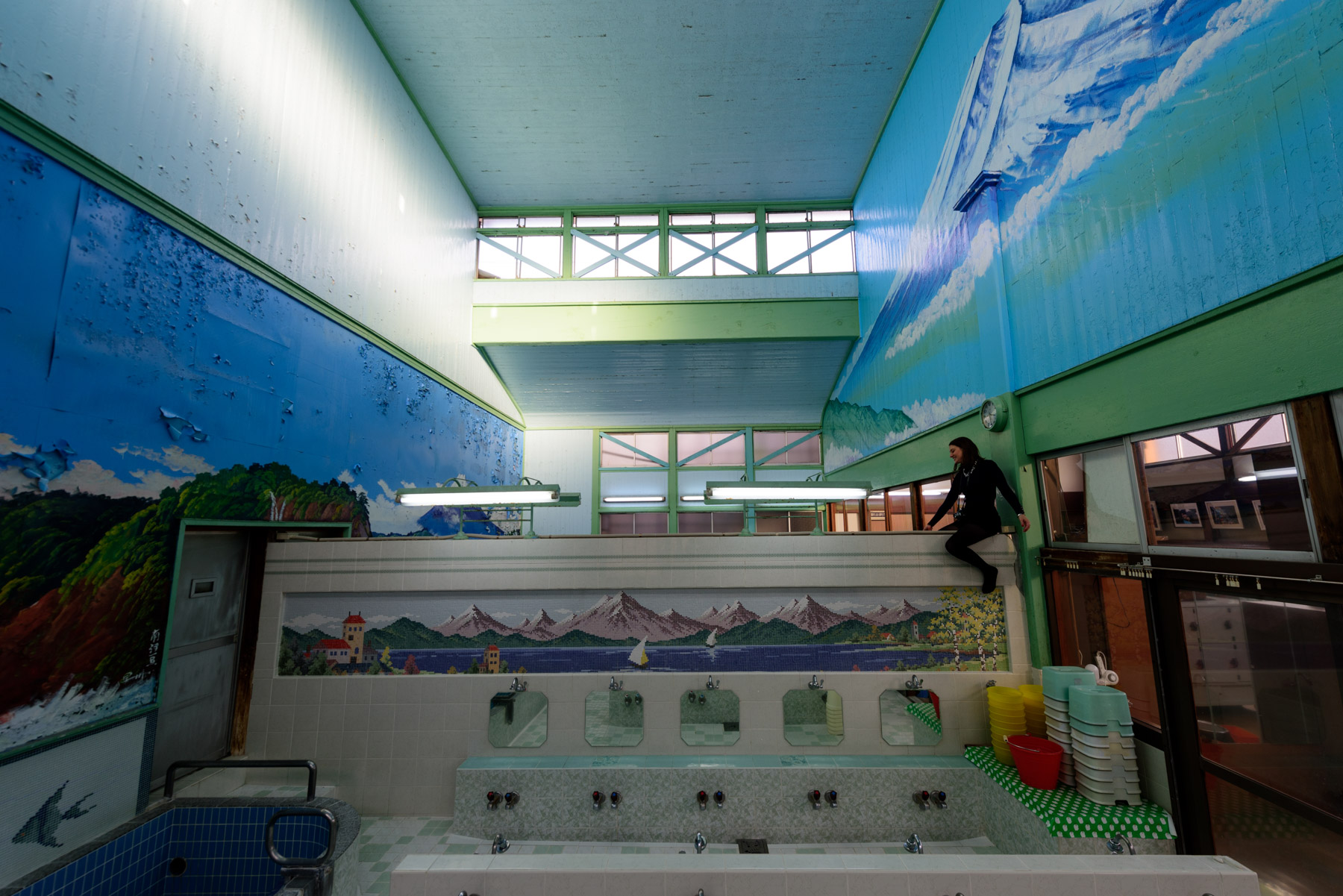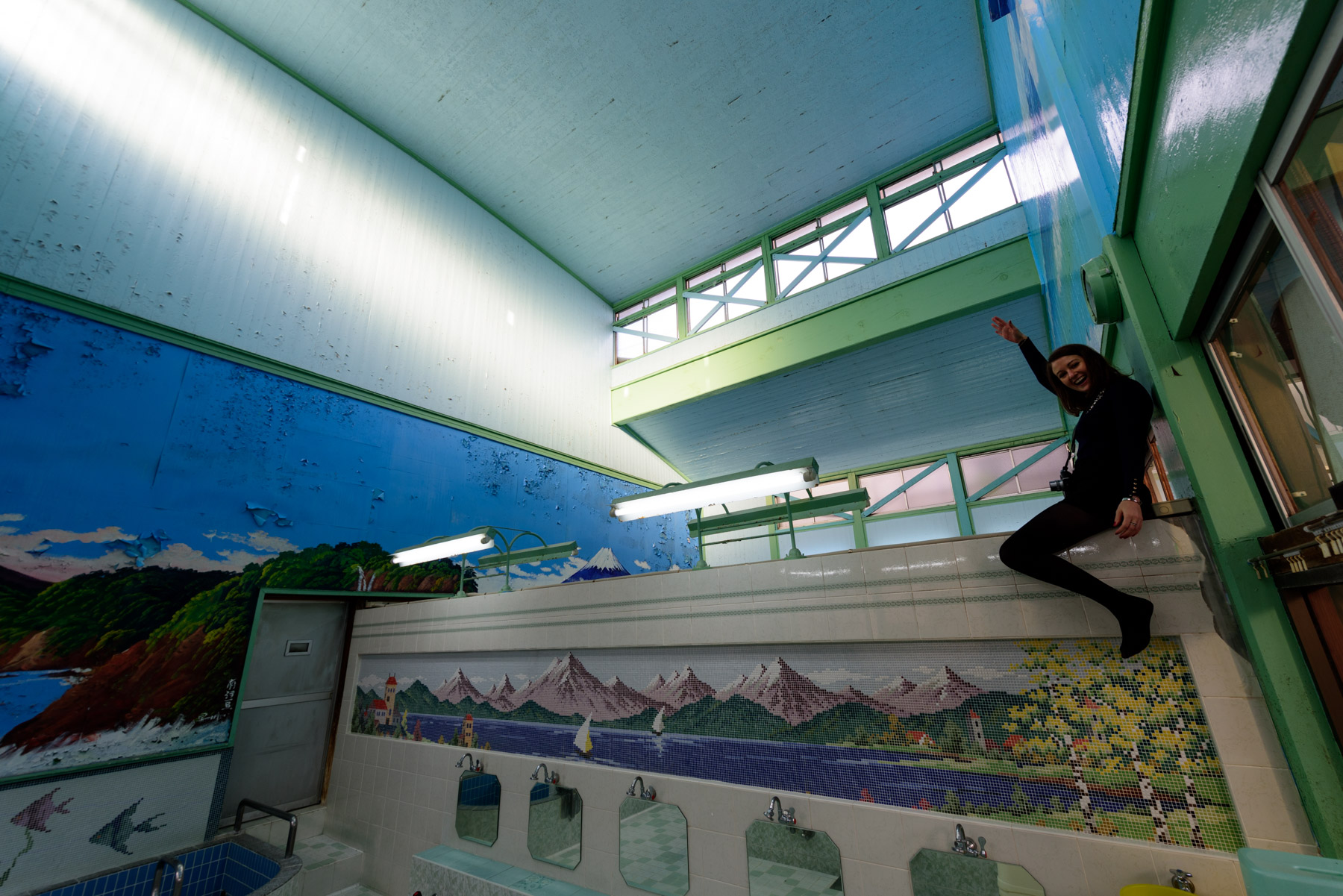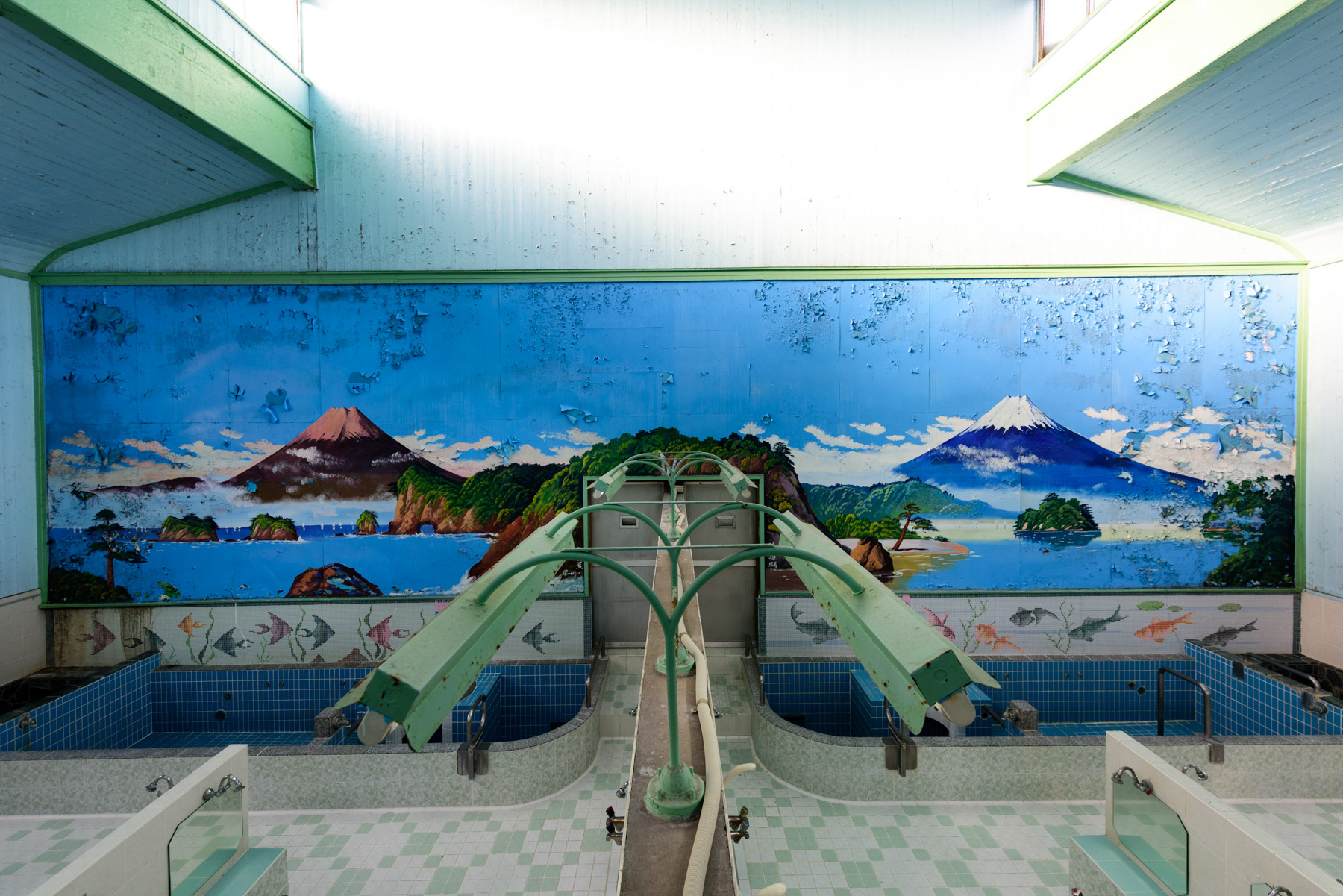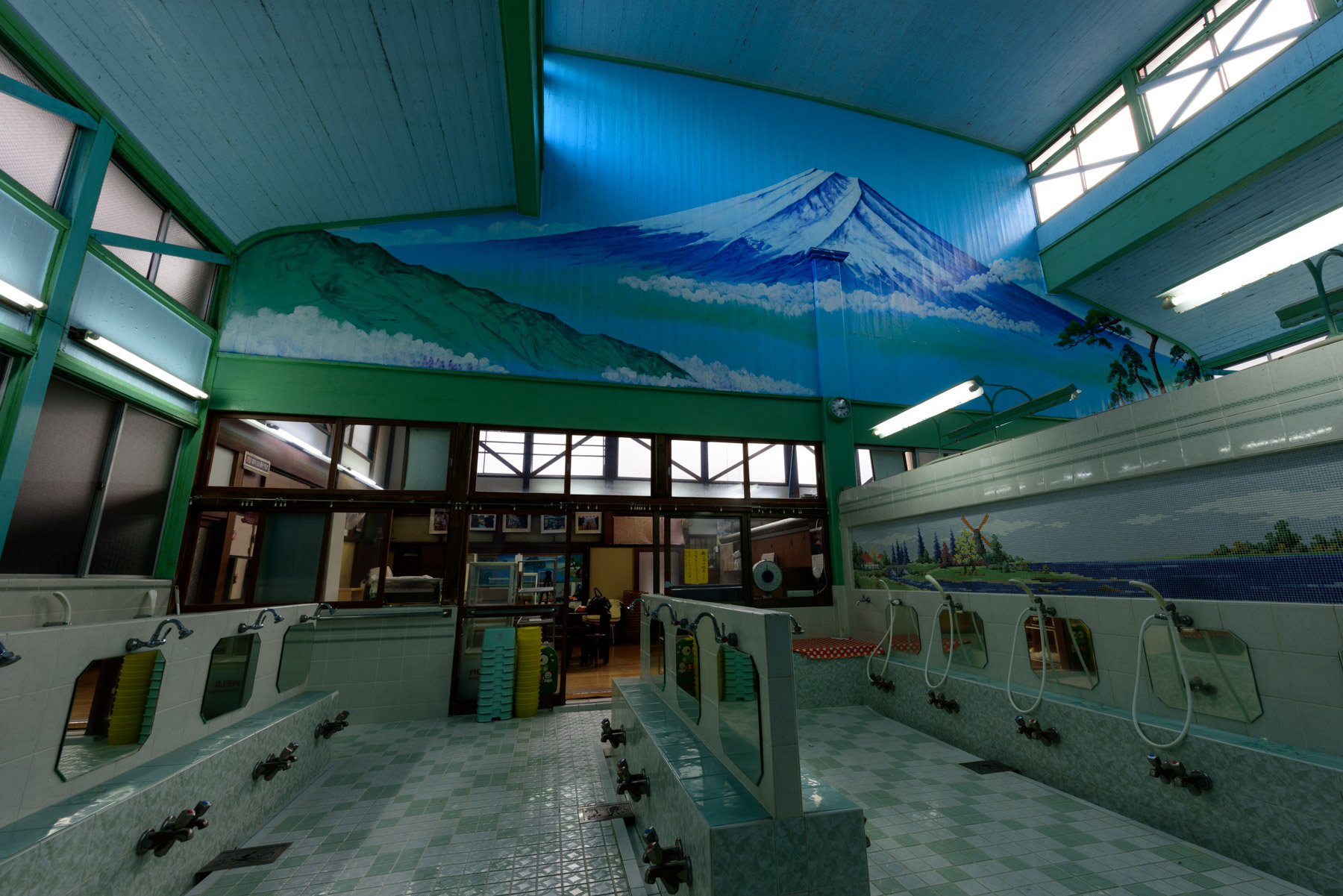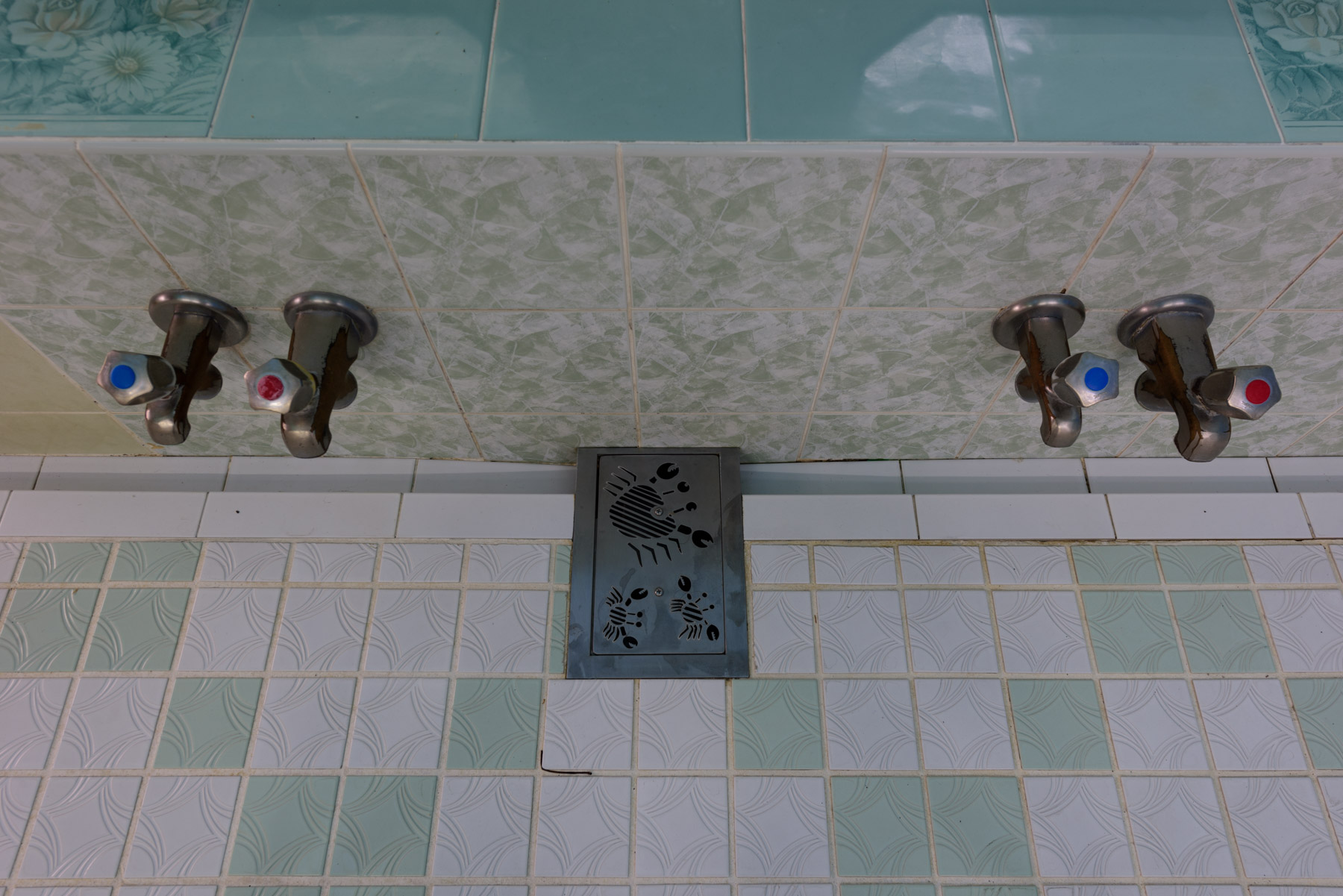Sento are found everywhere in Japan, even in the cities. They are communal baths, originally used by people who didn’t have a bathroom at home. There used to be over 2,000 sento in Tokyo. Their numbers grew especially after World War II, peaking in the ’70s. Nowadays, they’re still used by locals and appreciated as a way of connecting with the neighbourhood.
Strolling through Tokyo you can spot those sento by the black smoke streaming from their high chimneys. The water isn’t from natural streams like that of the onsen spas, just ordinary water heated by a rudimentary coal boiler.
My friend Stéphanie, is a sento otaku. She loves them and has visited every single one. Although she’s French, she’s become part of the Sento Committee in Tokyo. She took me to a few of them and pointed out that they always have their own unique art inside: paintings on the wall. Usually, traditional sento have a painting of Fuji-san with a few variations from one to another – perhaps a different viewpoint, different goings on in the foreground or a different season.
We also visited the Tsuru No Yu sento, (鶴の湯) which was closed, but the kindly owner opened the doors for us. The coal heating system had broken down a few years back and it would have cost millions of yen to repair, which unfortunately would not have been worthwhile; sento are today more a passion than a real business.
In a few years there’ll be no real sento in Tokyo any more – another disappearing feature of Japanese culture. I wish they could be replaced with pretty little Japanese gardens featuring a few sento memories, but the odds are more and more in favour of shiny new high-rise buildings.
Yet a few modernized sento have learned how to survive, offering spa services such as mud baths, hammams, saunas, aromatherapy and even wine baths. Maybe this will help to keep a few original sento alive as well, as one or two are closing every week. As of 2015, there were about 600 of them left in Tokyo.
FACTS
- 1923–2014
